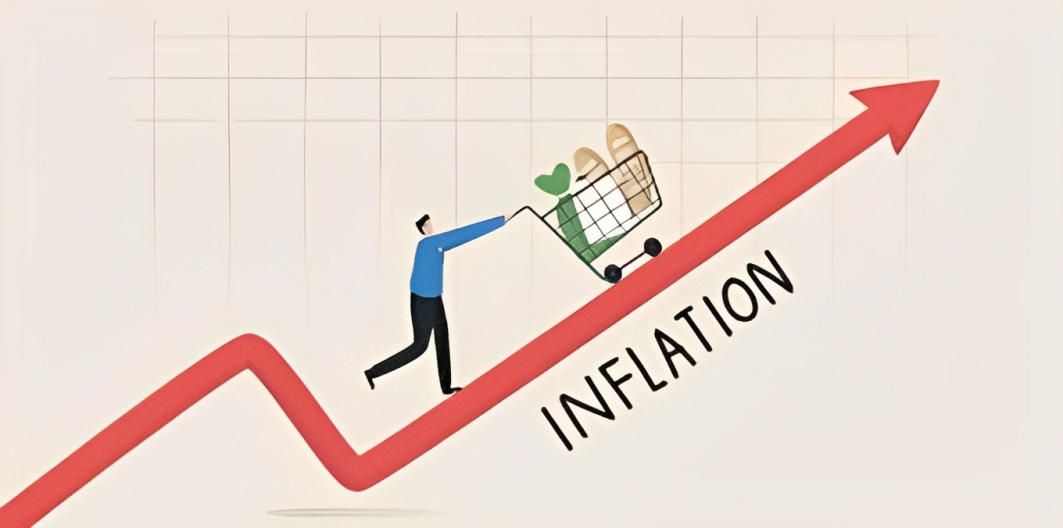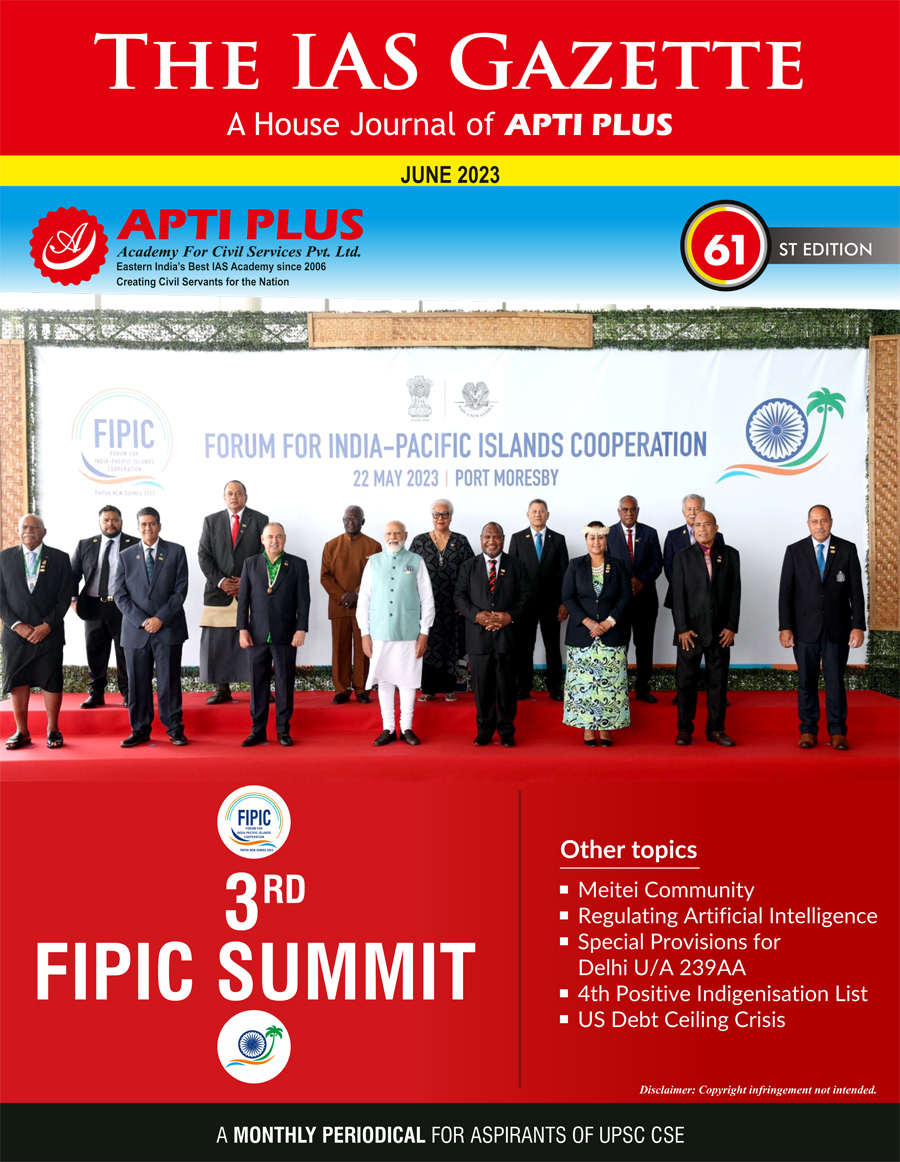GREEDFLATION

Copyright infringement not intended
Context: Greedflation is in the news due to increasing inflation in India and around the world.
Details
- Greedflation is a term that describes a situation where inflation is driven by excessive greed and speculation rather than by supply and demand factors. It occurs when investors, consumers and businesses expect prices to rise continuously and act accordingly, creating a self-fulfilling prophecy.
- Greedflation can lead to asset bubbles, financial instability, income inequality and social unrest.
Greedflation
About
- It describes a situation where high inflation is driven by excessive demand and speculation, rather than by supply shocks or monetary expansion.
- It is not a new phenomenon. It has been observed in many countries and regions in the past, such as the US during the dot-com bubble, China during the housing boom, and Latin America during the debt crisis.
- However, it has become more prevalent and persistent in the post-pandemic world, as unprecedented fiscal and monetary stimulus, low-interest rates, supply chain disruptions, and pent-up demand have created a perfect storm for inflationary pressures.
Impacts on Greedflation
- Greedflation can have negative impacts on economic growth, social welfare and environmental sustainability.
- It can erode the purchasing power of consumers, especially the poor and the middle class, who spend a larger share of their income on essential goods and services.
- It can widen the gap between the rich and the poor, as the wealthy benefit from rising asset prices while the rest suffer from rising living costs.
- It can increase the volatility and fragility of financial markets, making them more prone to crashes and crises.
- It can exacerbate global imbalances, trade tensions and geopolitical conflicts, as different countries pursue divergent and incompatible policies to cope with inflation.
Main Drivers of Greedflation in India
- Rising global commodity prices, especially crude oil, metals and food items, have a direct impact on India's import bill and domestic production costs.
- Supply-side bottlenecks due to the second wave of Covid-19, which have disrupted the normal functioning of various sectors such as manufacturing, transportation, hospitality and education.
- Excess liquidity in the banking system has been injected by the RBI through various measures such as quantitative easing, targeted long-term repo operations, and moratoriums on loan repayments.
- Strong recovery in consumer demand, especially in rural areas and for discretionary items such as automobiles, durables and services, as the economy gradually reopens after the lockdowns.
- Speculative behaviour by traders, investors and consumers, who anticipate further price increases and hoard goods and assets, creating artificial scarcity and fuelling inflation expectations.
Challenges
- Greedflation poses a dilemma for policymakers, who face trade-offs between stimulating growth and controlling inflation, supporting demand and curbing speculation, and accommodating expectations and anchoring credibility.
- It requires coordination and cooperation among different actors and institutions, such as central banks, governments, regulators, businesses and civil society.
- It demands innovation and adaptation in terms of policies, regulations, technologies and behaviours.
The way forward for greedflation is not clear or easy. There is no one-size-fits-all solution or silver bullet for greedflation. Different countries may need different strategies and measures depending on their specific circumstances and preferences.
Steps that could help to mitigate or prevent greedflation include:
- Adopting a more balanced and holistic approach to macroeconomic management that considers not only inflation but also growth, employment, inequality and sustainability.
- Strengthening the independence and accountability of central banks that can conduct credible and effective monetary policy that anchors inflation expectations and prevents excessive money creation.
- Implementing a prudent and countercyclical fiscal policy that supports public investment, social protection and redistribution without creating excessive deficits or debts.
- Enhancing financial regulation and supervision that can prevent excessive leverage, risk-taking and speculation in financial markets without stifling innovation or competition.
- Promoting structural reforms that can boost productivity, competitiveness and innovation in the real economy without compromising social or environmental standards.
- Fostering international cooperation and coordination that can harmonize policies, rules and standards across countries without undermining national sovereignty or diversity.
Way forward for India to tackle greedflation
Coordinating fiscal and monetary policies
- Coordinating fiscal and monetary policies to ensure that they are consistent and complementary in achieving macroeconomic stability and growth objectives. For example, the government should adhere to a credible fiscal consolidation path and prioritize quality and productivity-enhancing expenditure.
- The RBI should communicate clearly and effectively its policy actions and outlook to manage inflation expectations and market sentiments.
Strengthening supply-side reforms
- Strengthening supply-side reforms to enhance productivity, efficiency and competitiveness of various sectors of the economy, such as agriculture, industry and services. For example, the government should implement the recently enacted farm laws, which aim to liberalize the agricultural markets and empower the farmers.
- The government should expedite the privatization and disinvestment of public sector enterprises, which can improve their performance and governance.
Diversifying the sources of energy and raw materials
- Diversifying the sources of energy and raw materials to reduce dependence on imports and vulnerability to external shocks. For example, the government should promote renewable energy sources such as solar and wind, which can reduce India's carbon footprint and energy import bill.
- The government should explore alternative sources of metals and minerals, such as recycling and domestic exploration.
Improving the quality and timeliness of data collection
- Improving the quality and timeliness of data collection and dissemination to monitor inflation trends and dynamics more accurately and effectively. For example, the government should update the base year and weights of various price indices, which are currently outdated and do not reflect the changing consumption patterns.
- The government should improve the coverage and frequency of data on various sectors such as services, which are underrepresented in official statistics.
Educating and communicating with the public and stakeholders
- Educating and communicating with the public and stakeholders to manage inflation expectations and discourage speculative behaviour. For example, the government should launch awareness campaigns on the causes and consequences of inflation, and how consumers can cope with it.
- The government should crack down on hoarding, black marketing and profiteering activities, which can artificially inflate prices.
Conclusion
- Greedflation is a serious challenge for India's economy and society. It requires a holistic and proactive approach from policymakers, businesses and consumers to address its root causes and consequences. Only then can India achieve sustainable and inclusive growth in the post-pandemic world.
Must Read Articles:
|
PRACTICE QUESTION Q. What is a possible consequence of Greedflation? 1. Social unrest and inequality 2. Economic stagnation and recession 3. Environmental degradation and resource depletion Which of the following Statement is/are correct? (A) 1 and 2 only (B) 2 and 3 only (C) 1 and 3 only (D) 1, 2 and 3 Answer: D |





1.png)
